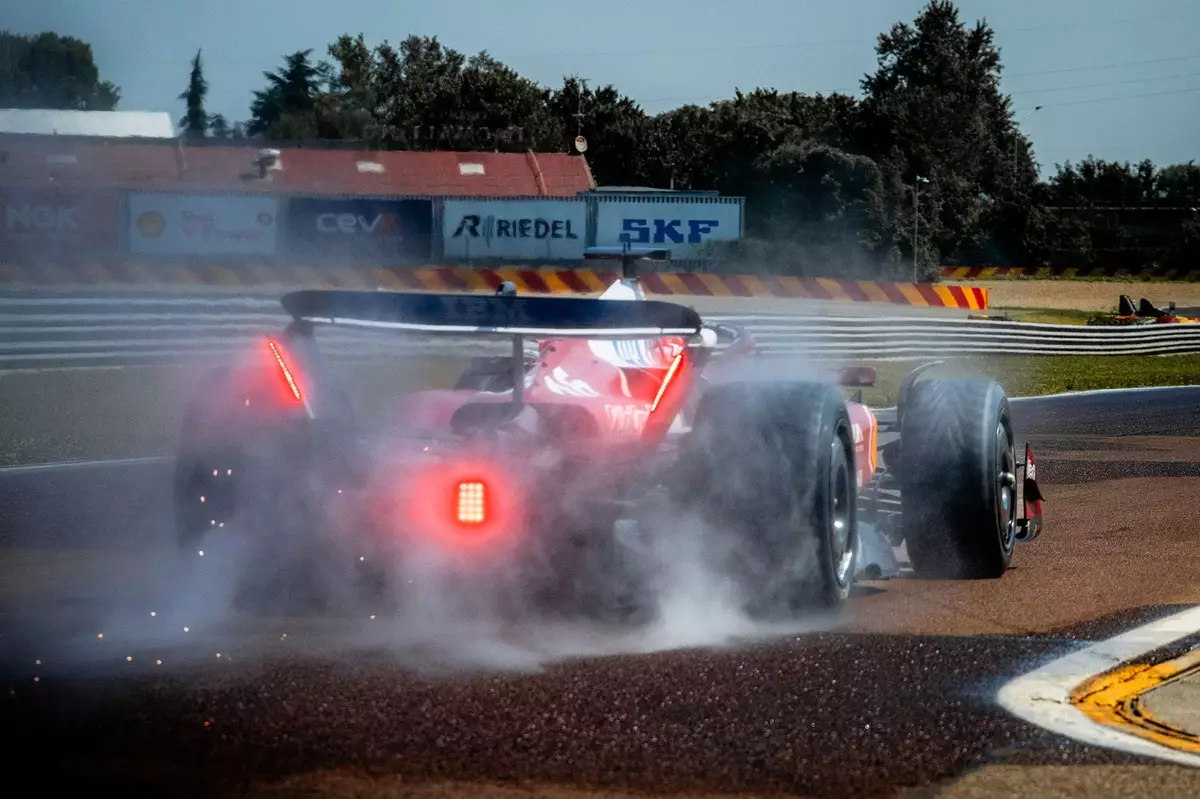In the dynamic world of Formula 1 racing, few variables can disrupt the finely-tuned machinations of a competitive event quite like rain. Among the essential elements of performance in these conditions are the wet tyres, a creation of the renowned manufacturer Pirelli. Despite their technical prowess, these blue-sidewalled wet tyres face an uphill battle in delivering optimal performance at racing speeds. The capability of these tyres to displace an astonishing 85 litres of water per second is nothing short of remarkable; however, the reality is far more challenging. The fickleness of weather, combined with the unique nuances of track conditions, often leads to reduced visibility and safety concerns, resulting in race stoppages rather than the thrilling contest fans crave.
The recent history of races like those in Belgium in 2021 and Brazil in 2022 illustrates this predicament starkly. In both instances, drivers hesitated to make the crucial switch to wet tyres, preferring to stay competitive with intermediates even as conditions deteriorated. This phenomenon raises questions about the efficacy of the wet tyre and Pirelli’s approach to ensuring that drivers can push the limits, even in adverse conditions.
Pirelli’s Vision for Next-Gen Tyres
Looking ahead, Pirelli is not content with the status quo. With an eye toward the 2026 season, the manufacturer is concentrating on enhancing the performance metrics of the wet tyre to align more closely with those of the intermediate tyre. Currently, the wet tyre tends to overheat and degrade swiftly, faltering under conditions that would ideally suit its design. In a sport that thrives on high-speed thrills, ensuring that these tyres can perform consistently without forcing red flags is crucial.
Mario Isola, Pirelli’s motorsport manager, has expressed optimism about the advancements in tyre technology. He notes that the gradual improvement of the intermediate tyre has already set a solid foundation for future designs. The quest is to find a more favorable crossover point between the wet and intermediate tyres, which can potentially change the dynamics of how races are approached when confronted with heavy rainfall. Isola’s focus is on producing a wet tyre that’s not only suited for safety car deployments, but instead can be a legitimate racing option.
The Science of Tyre Testing
To validate these theories, Pirelli conducted extensive testing at Ferrari’s Fiorano circuit, utilizing a ‘mule car’ designed to simulate the loadings of the forthcoming F1 cars. Unfortunately, the unpredictability of the weather in Emilia-Romagna complicated these tests, rendering some results less reliable than they could be. A nuanced understanding of the crossover point, the moment when conditions dictate a change from one type of tyre to another, is pivotal. The ideal scenario occurs when lap times slow to only 112% of dry pace, but the current capable wet tyres only initiate usable performance at around 120%.
Pirelli’s introduction of a new wet tyre specification this season aimed to ameliorate thermal sensitivity and enhance tread performance under lateral loads. However, without rigorous testing, these innovations had uncertain outcomes. The slightly improved crossover percentage of 118%—tinged with disappointment for not fully meeting the target of 116%—underscores the complexities involved in tyre engineering.
Anticipating a Shift in the Tyre Paradigm
As Pirelli aims to redefine the performance spectrum for wet tyres, a sense of urgency permeates the organization. The evolution of technology, combined with ongoing feedback from racers and teams, will be crucial as they strive to produce a tyre that marries performance with reliability. The balance between safety and speed is a perennial challenge—a conundrum where just a fraction of a second can decide championship outcomes.
It is critical for the sport to evolve past the traditional notions of wet weather racing. Pirelli’s innovation journey is essential not just for improving safety, but for igniting the excitement of genuine racing. The hope is to transform the often-muted spectacle of rain-soaked races into riveting displays of skill and strategy. The anticipated advancements for 2026 may well hold the key to unleashing a new era of racing, where wet conditions no longer equate to processions behind a safety car, but rather an invitation to witness raw racing talent disrupt the elements.

